#i can personally vouch for the listing it was surprisingly good quality???
Text
TFTBN Read-through | Part 3: Chapters 22-34
Part 1: 1-14 | Part 2: 14-22 | Part 3: 22-34 | Part 4: 34-64 | Part 5: 64-80 | Part 6: 81-90 | Part 7: 90-100 | Part 8: 100-127 (caught up here)
I was flipping through the pages, looking for interesting parts, when a sheet of parchment suddenly came loose from another section much deeper into the book. Unlike the rest, the material looked new, probably only replicated in the last year or two.
Curious, I lifted it up, and folded it open. To my surprise, the text was dark red, and said--
YOUR LIFE IS IN DANGER
DO NOT TRUST ANY WITHIN THE INNER CIRCLE
FIND THE ARCHIVE ON THE TOP FLOOR OF THE MAIN BUILDING
REMEMBER YOUR OATH
⬇️
SHES GONNA GET MURDEREDDDDDDD WOOHOOOOOOO SWEEP SWEEP SWEEP SWEEP SWEEP
actually I wonder if Theodoros chan’s gonna get murdered actually. Son of a high-ranking member, asked Su to go to his room last night in front of everyone, was walking around alone with Su and Bardiya and milf mentor. Su would be the prime suspect with only Ran to vouch for her.
He was a young man, though not resembling of the others in our class. He had ear length, light brown hair, a light-bronze complexion, and quite delicate-looking features... Yet they somehow didn't come across as immature. In fact, he was surprisingly good looking, to the point that there was something reminiscent of a statue in his appearance.
⬇️
LUKA????????
Oh my god this guy acts exactly like Luka too
Su said he was looking at her funny...does he recognize her, but she doesn't recognize him? I know a luka when i SEE ONE. THAT BOY KNOWS WHAT'S GOING ON. HE IS A LOOPER LIKE SU!!!
or maybe he's just silly idk!!! hehe
but why does he seem to remember/recognize her and she doesn't? does it have something to do with her request in the first chapter??? did she REQUEST TO FORGET??? how could u leave ur looping bestie like that wtf su that's so mean
did he leave the note for her? he wasn't at the dinner!! maybe he slipped it into the book and knew she would read it then! hmmm but the note could have also been placed there long before they met and that wouldn't really explain the timestamp on when it was written...what was it 1-2 years ago? i guess not. omgggg iim so excited to see more of him i hope he doesnt die in five minutes ill be so sad forever
Falafel, pita bread with various stuffings, steak and egg porridge, cheese salad; high quality Ysaran food, all well prepared by Yantho,
SWANA CUISINE SWEEPING THE NATION I still remember the shakshuka and lahmebajeen from ran and su’s lunch
I feel like kam has a crush on su and has no idea how to contextualize it beyond an academic rivalry — su is hopelessly in love with ran and completely unaware of the fact that she is — ran holds a dislike for su for some reason, but still cares for her. her feelings seem extremely complicated.
The ransu(? no names given but assuming) childhood scene on the beach omg…that was cute oh noooo 😭 ok they did get my ass with that one.
hmm idk if that was ransu because the other girl's personality was very different from ran's. but also this could have been long enough ago that ran's personality has drastically changed since then
Big brother is very good at his role! Sekhmet said. Unfortunately, he is also extremely stupid. He can only really think about the things he has been told to do. I have seen him try to think about other things, and it is slow and bad and embarrassing for everyone.
⬇️
Kindest younger sibling interaction
Ok here’s my death prediction list
1. Utsu (botched - she’s meant to be killed but someone dies in her place)
2. milf mentor
3. Theo
4. Another inner circle member/staff (probably a combination with 1+2)
Regrettably I think kam is going to live forever
I’ve disagreed with kam on literally everything so far but especially this aversion she has towards solving a problem she won’t get to benefit from (“let us be the last”). She’s so…childish? It’s a very childish point of view.
this adherence to gender a lot of characters hold really surprises me...i figure this far out in the future everyone would be a lot more fluid!!! what's with this obsession with antiquity (@ the characters/setting not lurina)
What I also don’t understand is why humanity didn’t just clone from the original 10k then continue having children biologically (or like test tubeically. ykwim). Are 10k humans enough to avoid a genetic bottleneck? whats the minimum viable population size for humans I’m not a biologist
Ok according to one article the number is 98. That is too low. who said that. lets kill him
Another says 14,000
ok if you average those two guys out you get 7k 🙄 they’re fine. assuming good genetic diversity from the source group you probably wouldn’t even need to monitor for inbreeding. Why are they doing this complicated shit and causing mental prolapse.
THAT BRINGS ME BACK TO THE POINT ABOUT THE CLONES TOOOOO CLEARLY THEY HAVE THE TECH TO MAKE VIABLE CLONES WITH A CLOSED & SAFE SOURCE SUPPLY WHY ARE YOU WORKING AGAINST BIOLOGY…UR EFFORTS WOULD BE BETTER SPENT DEVELOPING A WAY TO TRANSFER HUMAN CONSCIOUSNESS FROM ONE BODY TO ANOTHER RATHER THAN MAINTAIN AN AGING BODY!!!!
Hmmm. Actually I wonder if Su’s grandpa had a similar idea. Considering the weird identity thing she has going on. Nothing to explicitly suggest this yet i think? just somethign to keep in mind considering he was voted off the polycule
I also wonder if that was related to the conversation regarding the Phoenix and the Dragon. maybe transfer of consciousness leads to loss of memory? But that wouldn’t make sense if the tech was perfect, everything would move over, leaving the old body a blank slate…what would that do to a brain, psychologically, seeing one’s former body in a dead state? also what would it do to an empty brain to suddenly be inhabited by foreign electrical synapses harboring thousands of memories preferences likes/dislikes etc. would it fight back/resist?
Im thinking back to those scratches on the wall in the kitchen. Obviously super freaky shit like 10 chapters ago but we had no context to it (we still don’t) so it was like whoops! There’s that. lol.
Couple things:
- did someone bake the missing chef into 🤔 a roast?
- those tally marks may have been the missing chef’s and she was trapped in that room for years (thousands of marks, I think they said. Denoting days, maybe?) and then she died
- But that doesn’t explain the distinct lack of skeleton in the room. Or in the roast
- who would have it out for the chef
- why
- Hmmmm
- You guys ever read that short story in high school english about the lady with the rack of lamb and the officers
Anyways that chef is definitely deads. In the kitchen? Probably not. In their tummies? Noooo (<- secretly hoping yes). Floating in the abandoned plane ocean? Yassss
Lurina is AMAZING at dropping really disturbing nuggets in the middle of a passage then distracting the characters/keeping things going. I just wish I was more engaged with the pacing :(
Good heavens," Kam exclaimed. "Are these guns?"
They were, and in no small number. I could see at least fifteen rifles and ten pistols, and they weren't antiques. They looked like refractor weapons, the bronze still carrying the vivid sheen of recent production
⬇️
If this story turns into a COD lobby in the next 5 minutes im reading it forever
WTF
DEAD CHEF SWEEP
Ok I have to put a bookmark on where I am in the story so far. Chapter 33! I will continue to read through it slowly but am done with the reactions for now :) bye byeeeeee
#tftbn#bro this story really got me thinking about how like. existence is horror 😔#because like.#horror is fundamentally about a lack of information -> you exist and will one day die ->#you lack information on the reasons or means for this occurrence ->#you are hardwired to protect your own existence at all costs ->#this is eventually an impossible task ->#the mind evolved to understand its own mortality but not its own existence ->#horror is fundamentally about a lack of information ->#ugh that was so annoying to type out and doesnt even mean anything. does anybody want to see my cat#woof
8 notes
·
View notes
Text





My little sister had this on her xmas list this year but it turns out me and my other sister each bought one so now she has two banana men
#Amazon’s Choice for cursed items#i can personally vouch for the listing it was surprisingly good quality???#banana man#banana man plush#plush#toycore#plushies#plushcore#plushblr#plushiecore#food#?#banana#cursed plush#cursed items#cursed item#idk what to tag
2K notes
·
View notes
Text
021: Making an Architect
There isn’t an architect walking the planet that hasn’t questioned if they were making the right decision when they decided to become an architect – at least not if they’re being honest with themselves … which leads us to today’s topic of “Making an Architect”
[Note: If you are reading this via email, you will have to click here to access the on-site audio player]
Today we are going to try and answer the question “Do I Have What it Takes to be an Architect” – which I will admit is a pretty loose premise, but it doesn’t stop people from asking me that question a few times every single week. This is almost an existential question and the people who are asking it are typically are of an age when they shouldn’t be faced with such existential questions … but at what time of your life would you ask a question like this?
In these emails, the questions are always the same: They want to know if they would be any good at the practice of architecture – that before they make this fairly large career course-correction, would they be able to predict if they would experience success? Surprisingly, I get asked this question in some form or fashion all the time and responding to these emails typically requires some finesse. There are some serious implications on the line, I don’t have a functioning crystal ball, and most people’s circumstances appear somewhat unique … but here goes. We are going to start with the nebulous category of intelligence …
IQ as a Predictor of Capacity [2:11 mark]
The concept of measuring the IQ of an individual is credited to either German psychologist and philosopher Wilhelm Stern in 1912, or to Lewis Terman in 1916 (sources vary). Prior to these dates, large-scale testing was done by psychologist Alfred Binet in 1904 as part of a commission by the French government to create a system to differentiate intellectually normal children from those who were inferior (wow … harsh). Binet created the Binet-Scale and sometime later, Dr. Terman revised this scale to become the Simon-Binet IQ Scale. That scale classified the scores as:
Over 140 – Genius or almost genius
120 – 140 – Very superior intelligence
110 – 119 – Superior intelligence
90 – 109 – Average or normal intelligence
80 – 89 – Dullness
70 – 79 – Borderline deficiency in intelligence
Under 70 – Feeble-mindedness
You can find lists of typical IQ scores by profession on the Internet, and I’m not vouching for their credibility, but the part that is the most interesting to me is how these scores can be used to measure the relative capabilities of the individual in a real-world environment (i.e. what kind of job would you be capable of as the most valid predictor of future performance is general mental ability). To think that the intent of measuring one’s IQ is to determine to capability and capacity of an individual and that no amount of effort or preparation will allow someone with a 110 IQ to work a job that typically requires the capacity of a brain measuring something higher.
Top civil servants, Professors, and Scientists – 140
Surgeons, Lawyers, Architects, and Engineers – 130
School teachers, Pharmacists, Accountants, Nurses, and Managers – 120
Foremen, Clerks, Salesmen, Policemen, and Electricians – 110
Machine operators, Welders, and Butchers – 100
Laborers, Gardeners, Miners, Sorters and Factory packers – 90
All that having been said, having a high IQ doesn’t mean all that much to the unmotivated individual and success is relative and not an indicator of happiness (unless of course, you are only measuring it against failure).
Much of this data is taken from “Meritocracy, cognitive ability, and the sources of occupational success.” written by Robert M. Hauser but additional resources can be found here and here.
How to be the Best at What You Do [15:44 mark]
So moving on from intelligence, we get to discuss the more subjective characteristics of what makes a great architect. Which shockingly aren’t that much, if any, different from the traits that would make you successful at any type of work.
In my mind, there are five major things that will help determine if you will experience success as an architect:
They must take their work very seriously and consistently perform at the highest level.
They constantly aspire to improve their skills.
They demonstrate consistency in their delivery and their product.
They are impatient, frequently better leaders than collaborators.
They are passionate about what they do, motivated by improving themselves rather than monetary gains.
None of these should come as a surprise, these are traits that are appropriate to achieve success in just about any white-collar profession. You don’t need to to be a social and likable person to be the world’s foremost neurosurgeon … but it probably doesn’t hurt. You might also notice that I didn’t say these traits would help predict if you’ll make you a good designer – how could anyone really know something like that ahead of time? For just about everyone, your design skills will not be your road to success in this field, but designing is generally assumed to be the most alluring aspect of this profession. The difference between someone doing well and someone doing great as an architect is not their design skills, it’s their ability to make a personal connection with the people who hire them, work through problems by extrapolating similar conditions and codifying that process, and understanding why some solutions work and others don’t. This last one is overlooked all the time by younger designers, maybe not out of negligence but due to their maturity level. Being able to understand why you did something allows you to duplicate your successes without having to replicate your solutions (pretty sure I’ve said that before on the site here … probably, but it’s good enough to warrant some repetition.)
The characteristics I listed above would obviously work well in other professions … that’s sort of my point. The people who do well in the field of architecture would probably do well in any field that they chose to follow because they have these three traits. I will openly acknowledge that I know many people who had these traits who became victims of the recession – so I am not saying that the people who have not had success did not have these qualities. I am saying that without these traits your road to success is far more difficult.
I think it takes a certain type of brain to practice architecture but that doesn’t necessarily mean that everyone can’t find a place. While most people don’t go into architectural school thinking that they are going to be anything other than the world’s next great designer, the truth of the matter is that it takes a small army of people in all sorts of different roles to take on some of the projects being built these days. The design side of practicing architecture seems to benefit from someone who thinks radially, rather than linearly. Architectural design is about finding a balance between many things – some at complete odds with one another. The skill in being a terrific designer lies in your ability to effectively set priorities that push and pull on one another until there is some sort of equilibrium in the result. This means that all variables are in play at the same time, and for those people who solve one problem and then move on to the next one, they will experience some frustration. At the same time, thinking linearly works exceedingly well for people who will control the flow of information, oversee the process, and organize and maintain procedure – things that the architectural process desperately need. I’m not saying that a person can’t be both radial and linear thinkers, but I think I could successfully argue that they will be better suited and experience greater success in one area over the other.
Outro [57:33 mark] …
the best podcasts are recorded pantless
for once I’m not the one making weird noises
I’m struggling
listen to idiots
I’ll tell you why you’re still wrong
… it’s got to smell like bad breath
from Home https://www.lifeofanarchitect.com/021-making-an-architect/
via http://www.rssmix.com/
0 notes
Text
021: Making an Architect
There isn’t an architect walking the planet that hasn’t questioned if they were making the right decision when they decided to become an architect – at least not if they’re being honest with themselves … which leads us to today’s topic of “Making an Architect”
[Note: If you are reading this via email, you will have to click here to access the on-site audio player]
Today we are going to try and answer the question “Do I Have What it Takes to be an Architect” – which I will admit is a pretty loose premise, but it doesn’t stop people from asking me that question a few times every single week. This is almost an existential question and the people who are asking it are typically are of an age when they shouldn’t be faced with such existential questions … but at what time of your life would you ask a question like this?
In these emails, the questions are always the same: They want to know if they would be any good at the practice of architecture – that before they make this fairly large career course-correction, would they be able to predict if they would experience success? Surprisingly, I get asked this question in some form or fashion all the time and responding to these emails typically requires some finesse. There are some serious implications on the line, I don’t have a functioning crystal ball, and most people’s circumstances appear somewhat unique … but here goes. We are going to start with the nebulous category of intelligence …
IQ as a Predictor of Capacity [2:11 mark]
The concept of measuring the IQ of an individual is credited to either German psychologist and philosopher Wilhelm Stern in 1912, or to Lewis Terman in 1916 (sources vary). Prior to these dates, large-scale testing was done by psychologist Alfred Binet in 1904 as part of a commission by the French government to create a system to differentiate intellectually normal children from those who were inferior (wow … harsh). Binet created the Binet-Scale and sometime later, Dr. Terman revised this scale to become the Simon-Binet IQ Scale. That scale classified the scores as:
Over 140 – Genius or almost genius
120 – 140 – Very superior intelligence
110 – 119 – Superior intelligence
90 – 109 – Average or normal intelligence
80 – 89 – Dullness
70 – 79 – Borderline deficiency in intelligence
Under 70 – Feeble-mindedness
You can find lists of typical IQ scores by profession on the Internet, and I’m not vouching for their credibility, but the part that is the most interesting to me is how these scores can be used to measure the relative capabilities of the individual in a real-world environment (i.e. what kind of job would you be capable of as the most valid predictor of future performance is general mental ability). To think that the intent of measuring one’s IQ is to determine to capability and capacity of an individual and that no amount of effort or preparation will allow someone with a 110 IQ to work a job that typically requires the capacity of a brain measuring something higher.
Top civil servants, Professors, and Scientists – 140
Surgeons, Lawyers, Architects, and Engineers – 130
School teachers, Pharmacists, Accountants, Nurses, and Managers – 120
Foremen, Clerks, Salesmen, Policemen, and Electricians – 110
Machine operators, Welders, and Butchers – 100
Laborers, Gardeners, Miners, Sorters and Factory packers – 90
All that having been said, having a high IQ doesn’t mean all that much to the unmotivated individual and success is relative and not an indicator of happiness (unless of course, you are only measuring it against failure).
Much of this data is taken from “Meritocracy, cognitive ability, and the sources of occupational success.” written by Robert M. Hauser but additional resources can be found here and here.
How to be the Best at What You Do [15:44 mark]
So moving on from intelligence, we get to discuss the more subjective characteristics of what makes a great architect. Which shockingly aren’t that much, if any, different from the traits that would make you successful at any type of work.
In my mind, there are five major things that will help determine if you will experience success as an architect:
They must take their work very seriously and consistently perform at the highest level.
They constantly aspire to improve their skills.
They demonstrate consistency in their delivery and their product.
They are impatient, frequently better leaders than collaborators.
They are passionate about what they do, motivated by improving themselves rather than monetary gains.
None of these should come as a surprise, these are traits that are appropriate to achieve success in just about any white-collar profession. You don’t need to to be a social and likable person to be the world’s foremost neurosurgeon … but it probably doesn’t hurt. You might also notice that I didn’t say these traits would help predict if you’ll make you a good designer – how could anyone really know something like that ahead of time? For just about everyone, your design skills will not be your road to success in this field, but designing is generally assumed to be the most alluring aspect of this profession. The difference between someone doing well and someone doing great as an architect is not their design skills, it’s their ability to make a personal connection with the people who hire them, work through problems by extrapolating similar conditions and codifying that process, and understanding why some solutions work and others don’t. This last one is overlooked all the time by younger designers, maybe not out of negligence but due to their maturity level. Being able to understand why you did something allows you to duplicate your successes without having to replicate your solutions (pretty sure I’ve said that before on the site here … probably, but it’s good enough to warrant some repetition.)
The characteristics I listed above would obviously work well in other professions … that’s sort of my point. The people who do well in the field of architecture would probably do well in any field that they chose to follow because they have these three traits. I will openly acknowledge that I know many people who had these traits who became victims of the recession – so I am not saying that the people who have not had success did not have these qualities. I am saying that without these traits your road to success is far more difficult.
I think it takes a certain type of brain to practice architecture but that doesn’t necessarily mean that everyone can’t find a place. While most people don’t go into architectural school thinking that they are going to be anything other than the world’s next great designer, the truth of the matter is that it takes a small army of people in all sorts of different roles to take on some of the projects being built these days. The design side of practicing architecture seems to benefit from someone who thinks radially, rather than linearly. Architectural design is about finding a balance between many things – some at complete odds with one another. The skill in being a terrific designer lies in your ability to effectively set priorities that push and pull on one another until there is some sort of equilibrium in the result. This means that all variables are in play at the same time, and for those people who solve one problem and then move on to the next one, they will experience some frustration. At the same time, thinking linearly works exceedingly well for people who will control the flow of information, oversee the process, and organize and maintain procedure – things that the architectural process desperately need. I’m not saying that a person can’t be both radial and linear thinkers, but I think I could successfully argue that they will be better suited and experience greater success in one area over the other.
Outro [57:33 mark] …
the best podcasts are recorded pantless
for once I’m not the one making weird noises
I’m struggling
listen to idiots
I’ll tell you why you’re still wrong
… it’s got to smell like bad breath
0 notes
Text

It had reached the point of embarrassment. The business of ‘not yet’ having visited the ‘art island’ of Naoshima.
Many of my clients had made the trip and raved, or were seeking my advice on a regular basis… ‘what’s it like?’ ‘when’s the best time to go?’ ‘where should we stay?’ ‘what’s the food like?’ I could only share what I’d heard reported from friends so I had no choice but to do some first hand investigation.

Of course it had been on my Japan-travel bucket list for some years. While I’ve travelled from the head to the tootsies of Japan there is much amazingness yet to discover and only so much you can fit in between hosting tours, researching and writing, scouring the country for products for our upcoming online store (zenbuhome.com opening soon! nudge nudge, wink wink) and catching up with good friends in our second home.

Finally, last December (2016) we made it. Freshly hitched – it was a good excuse to taste a bit of island life.
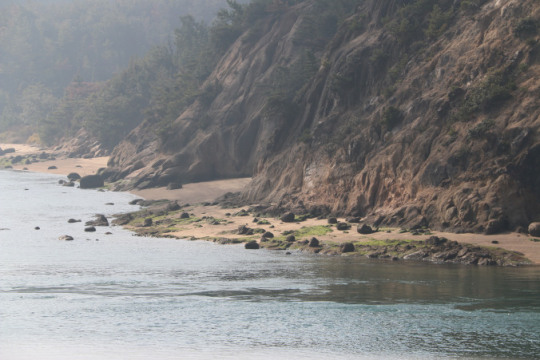
I wasn’t prepared for the truly laid back vibe, the lushness of the trees, the rugged coastline, the strange sadness in parts nor the outgoing friendliness of the local obaachan (grandmothers/older ladies) in others.

Or the sunsets. Oh my. The glorious background to wine-o-clock.

It was an all too brief two nights however I learnt so very much during our short stay that I thought it would be rude not to share it! I hope it helps you to make the most of your own Naoshima travel. Please note that there are a couple of different approaches and entry points to the island but I’ll only refer to the journey from Kyoto – from where Naoshima and the Seto inland sea are popular sidesteps.

1.Getting there. Although, as the crow flies, Naoshima is not too far from Kyoto – it ends up being about a 5 hour trip door to door so if you are only there for a weekend – go very early on the day you are due to arrive and don’t underestimate how much there is to see !
The train trip from Kyoto to Uno Port is pretty damn lovely. Especially when you pass through the farming area closer to the inland sea end of your journey, seated in old fashioned carriages, after a train swap or two, filled with character and the rhythm of the tracks is a special kind of relaxing fun.
Note that you need to switch trains a couple of times before arriving but it isn’t too complicated – on the final change you arrive on a small platform and may immediately decide to follow everyone else down the stairs. But don’t! Because you’ll just have to lug your bags back up again! All you have to do is hold fast at said platform for the connecting train – just a few steps away from where you sprang out of your carriage with intention to run to find the next platform in case you missed your next train .. Of course it pays to double check with a local if unsure (someone is bound to understand you if you look panicked enough) – you simply never know when they might change platforms on you.
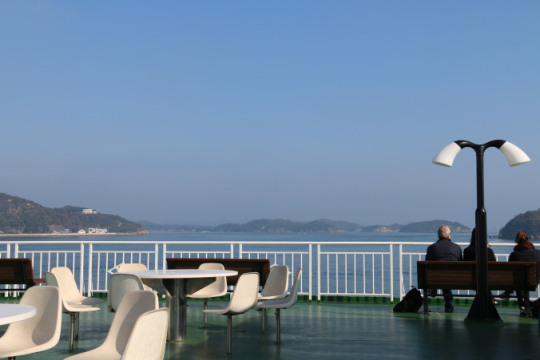
From Uno Port. There are in fact a couple of choices of transport across the waters to Naoshima (which we didn’t find out about until after the first boat trip) .

The cheaper option, used by locals, and for transporting cars and ‘bulky stuff’ over is somewhat rustic and the smoking indoors thing has not yet been banned – consequently a stale musty stench is embedded in the soft furnishings. But for a short trip, even on a frosty day, sitting rugged up on the deck in the sunshine – it’s perfectly fine.

However, next time I’ll try the fancier ‘visitor’ carrier version which is likely to be a little better set up for lugging bags onto and I’m guessing has a sweeter smelling cabin. I will be going back as some stage so I’ll update this at that time ( but don’t hold your breath or anything… well not unless you choose to sit indoors on the local ferry).

2. Accommodation. Being that we were attempting a mini honeymoon (ie research disguised as such due to perfectly convenient timing) we decided to opt for the justifiably luxurious accommodations of Benesse House.

We chose the ‘Museum’ rooms instead of the Oval, Park or Beach accommodations – based mainly on cost but also because the view was spectacular as they are at the top of a hill (as are the Oval rooms).
Each room offered large (for Japan) decks and as you don’t see a lot of deck action in Japan it was a novelty for us. Especially as we were so very keen on the outlook of wide blue skies and the sea.
The rooms presented very well on the website but we did find them to be showing a little age, and the bathrooms were very small (common in Japan but we were anticipating something a little newer and more spacious here for some reason), however it was only 2 days and everything was very comfortable and clean.

The service was minimalist but friendly. A small bottle of wine (not yet chilled…hence ice) was waiting for our arrival with a message of marital congratulations . All was well with the world. And that view… nothing else really mattered to us – even the somewhat unromantic twin (ie 2 x single ) beds couldn’t ruin our excitement.
An aside, staying at the Museum is actually pretty cool because you get to wander around the relatively people-free installation space until 11pm. Bonus!
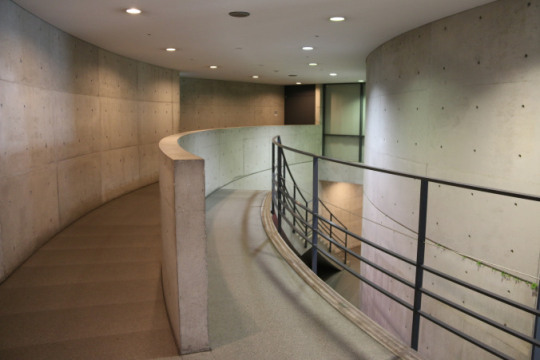
3. Sunsets. The Inland Sea sunsets were the most spectacular I’ve encountered – their potency has been forever etched in my mind. I’d return for the sunsets alone. Warning – potential sunset overload…




4. Days of closing. Next time I’ll be sure not to visit the islands on a Monday or Tuesday -unless we’re staying a whole week -because it turns out that many of Naoshima’s sites are closed on a Monday. On Tuesday’s the neighbouring art island of Teshima has its day of rest too – so pop that in your travel planner now ! Needless to say we were rather disappointed to discover, after arriving around 11am on a Monday (after a 5am start) that we’d just missed the last boat to Teshima and most of Naoshima’s sites were shut. As I said – we need to go back. It really pays to do your research.
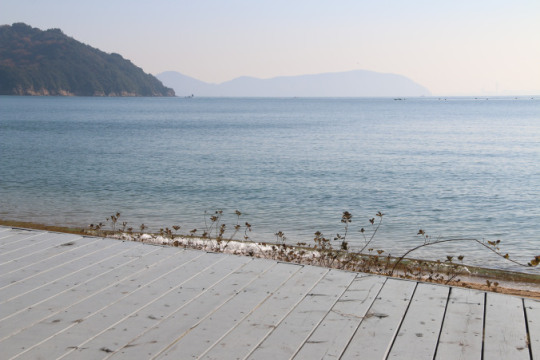
5. The Food. OK – settle in now because this might ramble on for a bit…
The Museum has 2 spots to eat – the cafe (which is only open until about 5pm) and the restaurant which serves a Japanese or Western breakfast and then opens again for dinner – Japanese – offering a choice of several different Kaiseki style courses, including one vegetarian version. But I’ll come back to that in a moment.
We slurped up pasta for lunch one day at the cafe and, although the space itself is lacking in any real personality, the view was very relaxing and the grub surprisingly good.
We sampled the western breakfast at the Museum and felt, for the money, that it wasn’t overly exciting, and the service was almost uncomfortably formal. Next time I’d choose their Japanese breakfast.
The dinners were not bad.. that’s probably unfair, they were in fact well presented and technically pretty spot on – but if I was to have just one Kaiseki meal in Japan it would be elsewhere…. I’d be guessing this is the only restaurant on the island serving Kaiseki style cuisine – and most other restaurants are quite a trek from the museum so it is certainly convenient.
If you haven’t experienced Kaiseki before I’d say this was a good entry level place. I chose the vegetarian Kaiseki and the husband’s course included meat and seafood – I was excited to see what they would come up with in the veggie option as I love good shojin ryori (buddhist vegan cuisine) but, sadly, I ended up with total food envy. My meal was fine but his sashimi looked pretty amazing and listening to him devour it as I flapped my konnyaku (devil’s tongue root jelly) ‘sashimi’ about was a little soul destroying… however my Nasu dengaku (fried eggplant was sweet miso sauce) was superb! In fact I could have eaten several of them and left the rest of my meal – except the tempura perhaps… but then his had fat, juicy prawns… oh stop it!

Right ! now we also had the buffet breakfast at the Terrace restaurant which is in the Park/Beach accommodations complex, right down by the water. Splendid – surprisingly high quality house made breads, pastries and jams, both Japanese and western specialities – think a very simple chawan mushi (steamed savoury custard), perfect omelettes made to order, a range of Japanese vegetable dishes, quality yoghurt, fruit, soup etc.
It ranks high on my personal hotel breakfast buffet scale. The outlook certainly doesn’t hurt either!
It isn’t the cheapest place for breakfast on Naoshima but as the museum and terrace restaurants are pretty much your only choice in this part of the island – I know where I’d be dining every morning.

We also enjoyed a degustation dinner in the same restaurant – French/Japanese. It was very good, a teensy bit old fashioned if I was being picky, but well executed with great flavours and textures using local ingredients. Fresh, flavoursome and a little bit of magic.
It didn’t hurt that they poured us champagne on arrival, sent out a plate with some strawberries and congratulatory message handwritten in chocolate and handed us a small carry bag when we left, inside was a gorgeous mini stollen (as it was just before Xmas). A lovely touch. The hand-luggage squished Stollen was repurposed as a gift to a friend so I can’t vouch for the flavour but it looked authentic!


We heard that there are a couple of decent places to eat near Honmura art house village (where the hotel shuttle bus stops FYI) -an Italian place, a burger joint and a ramen shop – we didn’t get to any of them. So do ask the hotel concierge what they recommend if you are staying longer and wish to try elsewhere.
The only thing is… that the evening hotel shuttle stops running rather early in the scheme of things but if the hotel knows you are eating at one of the Benesse house restaurants they seem to be able to arrange a car to pick you up. Saying that, even if you go with the dego – it is timed well enough for you to make it to final shuttle bus of the day – should your fork not dawdle over the pretty plates. If you eat in Honmura or down near the port you will need to arrange a taxi to get you home unless you eat early. Get your hotel to book that for you as I suspect there are not many on the island.
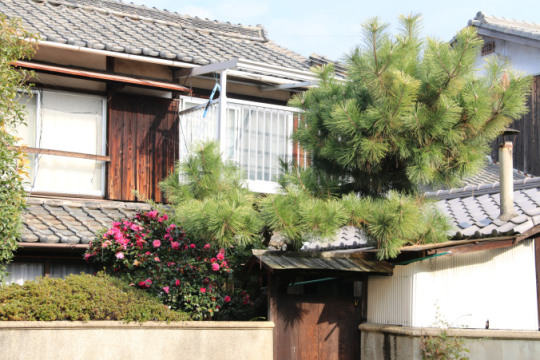
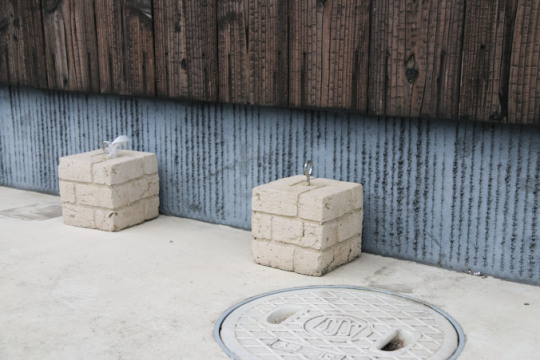

6.Miyanoura Port Area. I was a tad reluctant to add this next bit, and please allow me to state that this is only an observation based on our couple of days on the island so I’m hoping the vibe was simply because we were travelling in winter and the place was a bit flat being off-season…

Despite Yayoi Kusama’s cheery red pumpkin by the water’s edge, Naoshima’s Miyanoura port area ( where you’ll arrive when coming from the mainland’s Uno port) has a rather sorrowful energy.
Perhaps due in part to the skeletal remains of the ‘industry that was’? As can happen in any place over time. It’s as though the community around the port area has been quietly fading away over the years and everyone under 90 has relocated to the mainland for work or something ‘more’ than island life.
The only youthful looking residents we did spot seemed to own or work in one of the handful of tourism relevant businesses – small eatery, bicycle rental etc. The staff in the largish gift shop/cafe area at the ferry terminal seemed a little resentful to have to deal with foreigners. To be fair – their demeanor could have been due to shyness or a perceived language barrier…. They did seem very surprised, perhaps a little scared, when, during our transaction and attempted conversation, they realised we could speak Japanese . However they did not follow our cue.
It felt so very far away from the Japan we know and love. Even though tourism is clearly injecting cash into certain areas on the island I guess it could feel like they had no real choice in their community being inundated at times? And as we know some tourists are not very good it treating locals with the respect they deserve.

We have to wonder whether the reason for the permanent art project and the, ‘wonderful’ by all accounts, annual Trienale Art Festival was as a way to attract much needed life into the island. And indeed it has but I have to wonder if it’s what the locals were expecting.

Of course our discomfort with this is so minor in comparison with the joy experienced on the island but it did make me wonder how it has truly impacted the locals. Has anyone else had a shared experience in the port area?
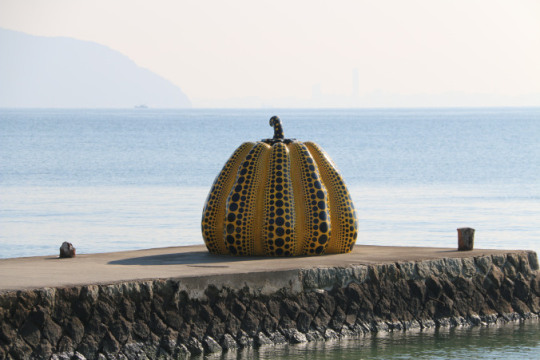
10. The Art. As you would anticipate – is spectacular.
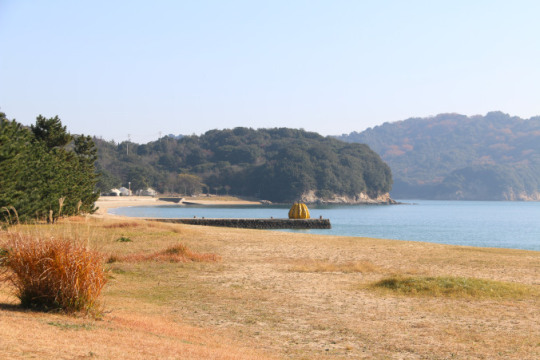
The outdoor sculpture installed around the island, sometimes in distant or almost hidden spaces against a canvass of raw nature.

The wide spectrum of artworks and artists both Japanese and foreign.
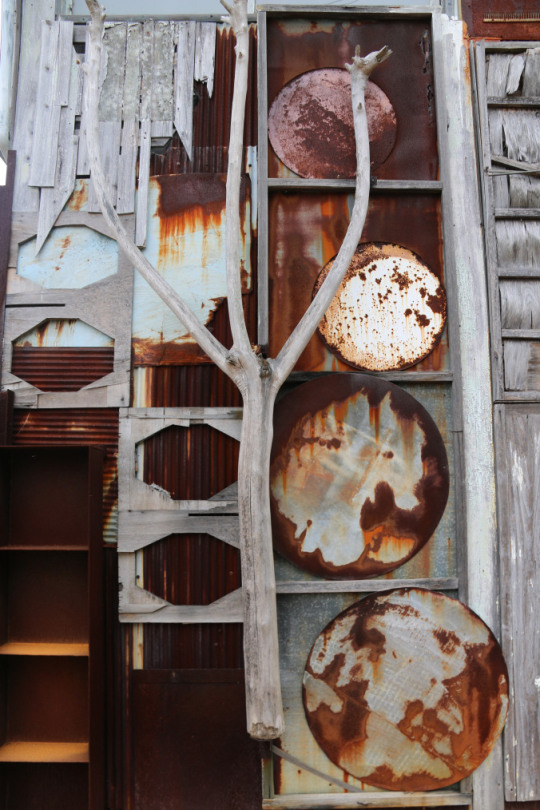
The fascinating purpose built architecture which plays a part in the art itself.
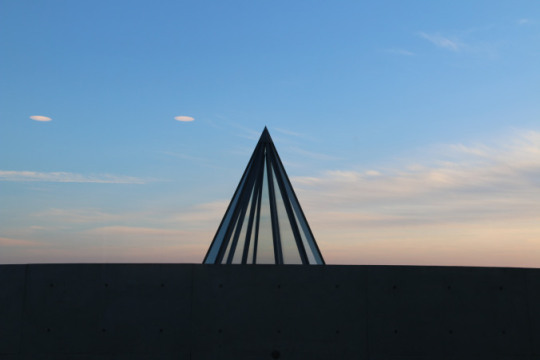
The practical-use installations – like the bubbly construction used as both a bicycle parking station and rain cover for those waiting for island transport.


The surprise of finding a little bit of something gorgeous around the next corner.. keep an eye out for the pictures in string that pop up now and again on the side of a house or in an alleyway.
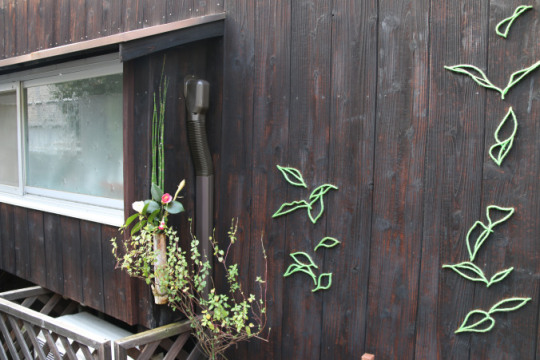
The deep cultural significance in many of the works in the living art house village of Honmura. All of it. Just took our breath away.

On that note. In direct opposition to the personal interactions experienced in the port area was the joyous experience of Honmura. It totally rocks!

Traditional architecture, laneways and temple areas interspersed with installations and friendly older folk who were more than happy to start a conversation (in Japanese) as they performed their daily shuffle from their homes to the grocery store.
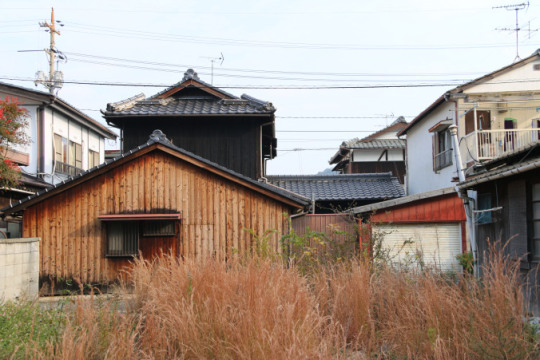

The local community centre up the road looks like THE place for meet ups and neighbourhood activities but the architecture and design alone makes it worth a visit as an ‘outsider’ and they have very clean public toilets too!
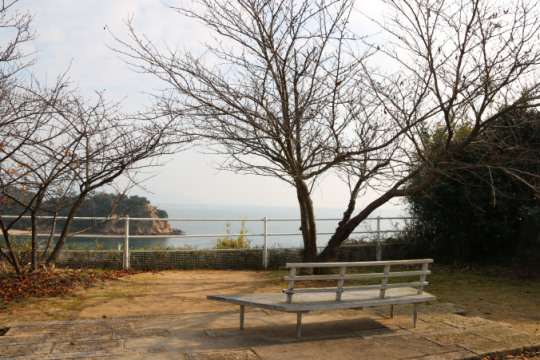
11. Size. Naoshima is bigger than you think. We spent 1.5 days excitedly wandering and didn’t see it all. Ideally try to stay a minimum of 3 or 4 days if you want to take in as much as possible, visiting the other islands in the vicinity too (eg Teshima, Inujima, Shodoshima etc) . And a week or more if you have time up your sleeve and like a bit of relaxation in with your art – you can always hop across to Shikoku too. There are some houses available to hire, yurts and minshoku around the islands so do your research if you fancy a more affordable , longer stay. Did I mention the sunsets?


12. What are you waiting for? Just go!


If reading about Naoshima sparked an interested in joining us on one of our luxurious Japanese Cuisine and Culture Tours then please take a look at our line up for 2018 – but hurry – they are filling up quickly – the Spring Tour is almost at capacity!
Do make sure you take advantage of the earlybird special if you can – it runs out in early July! We apologise that that they’ve all been snapped up for our Zenbu Haru spring tour.

Naoshima It had reached the point of embarrassment. The business of 'not yet' having visited the 'art island' of Naoshima.
#Architecture#art#art installations#Art Island#artists#beauty#Culture#design#entertainment#Food#inland sea#Japan#Japanese#Japanese island#peace#people#Photography#photos#Pumpkin#relaxation#sculpture#style#sunset#travel#views#vista#Yayoi Kusama
0 notes